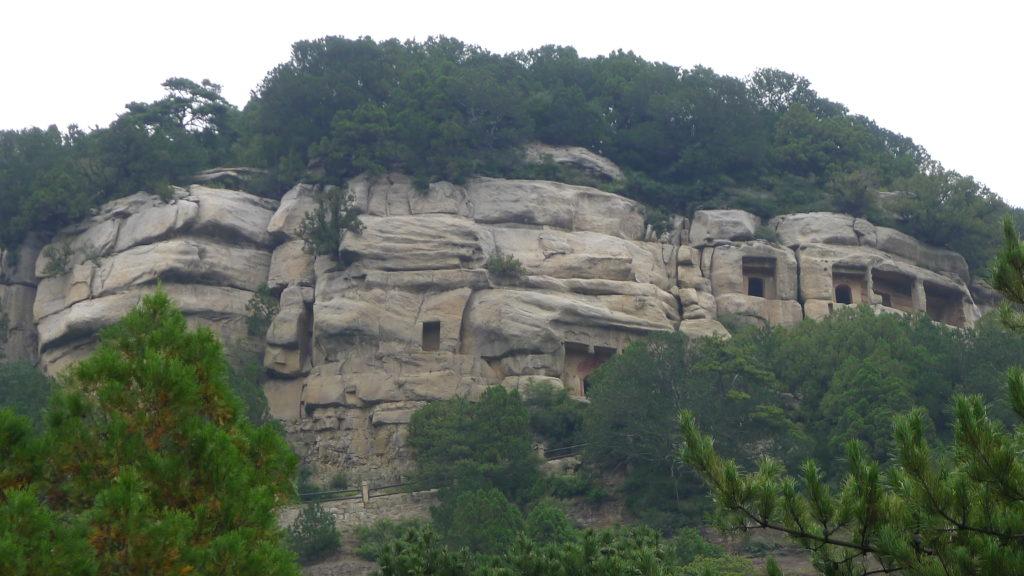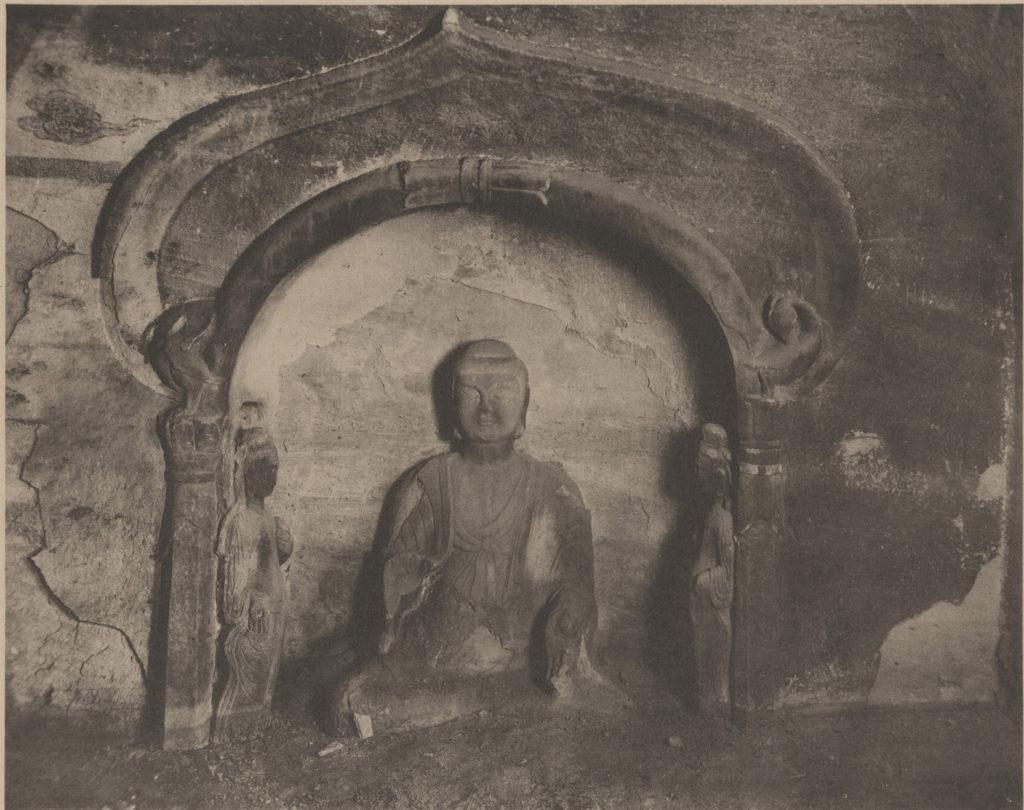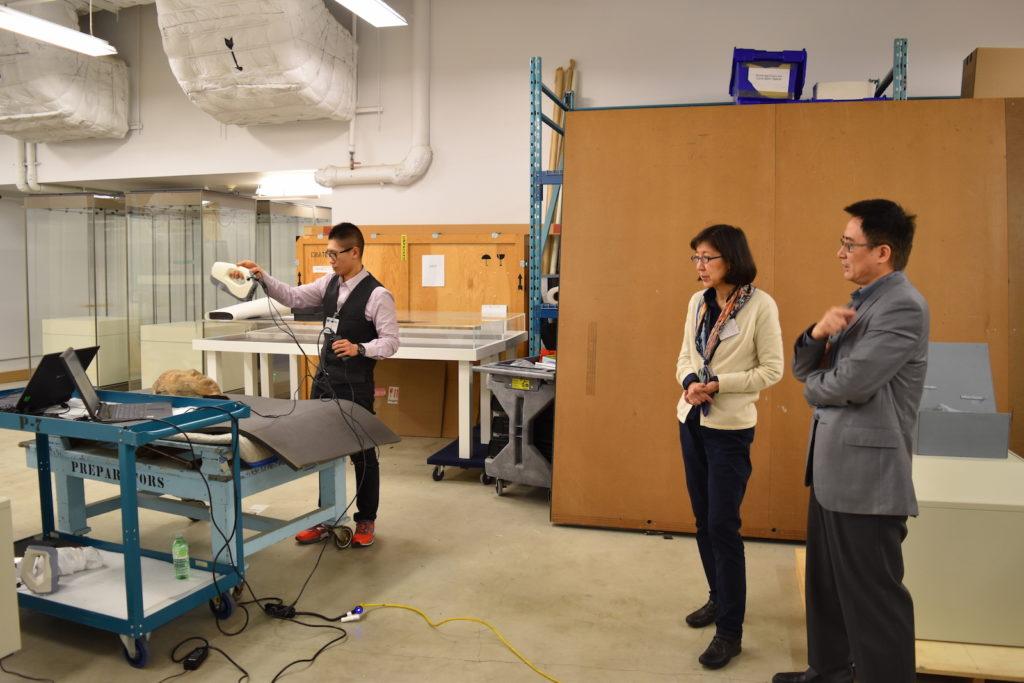 In the Shanxi province of China, about 36 kilometers south of Taiyun City, stands the Heavenly Dragon Mountain, or Tianlongshan. In the sixth century, Buddhist monks began construction on a series of caves that would serve as shrines filled with sculptures and carvings of the Buddha, bodhisattvas, and sacred imagery. In the 1920s, the first photographic evidence of the caves was published, revealing to the world what experts have called the finest art in Chinese history.
In the Shanxi province of China, about 36 kilometers south of Taiyun City, stands the Heavenly Dragon Mountain, or Tianlongshan. In the sixth century, Buddhist monks began construction on a series of caves that would serve as shrines filled with sculptures and carvings of the Buddha, bodhisattvas, and sacred imagery. In the 1920s, the first photographic evidence of the caves was published, revealing to the world what experts have called the finest art in Chinese history.
Unfortunately, because we as humans can’t have nice things, the publication of the photographs set off a wave of looting by art collectors, dealers, scholars and even museum curators who cut much of the art from the walls of the caves. Many of these sculptures have been recovered and are now displayed in museums around the world, but the beauty and meaning of the caves themselves has been forever altered.
A few years ago, the Center for the Art of East Asia at the University of Chicago set out to track down as much of the art from Tianlongshan as possible. Thanks to the Tianlongshan Caves Project, over a hundred sculptures and sculptural fragments have been located, but they’re scattered across the world in various museums and private collections, so that it’s impossible for people today to see and understand the art in its original context. Much of the cultural and religious significance of the caves lay in the way the sculptures were grouped, and that was lost once looters started hacking things up.
However, almost nothing is impossible with 3D technology, and that’s where the second phase of the project comes in. By 3D scanning the recovered sculptures and fragments, the researchers are digitally reconstructing the caves as they once looked. The high-resolution scans, which can be seen on the project website, will ultimately be used for digital reconstruction of fragmented sculptures. The project isn’t finished, but everything that has been compiled so far is currently being digitally displayed at the University of Chicago Center in Beijing until September. Visitors can see, in addition to the digital models, the 1920s photographs of the art in the caves alongside current photographs of the damaged site.
The scanning and digital modeling of the sculptures took place between 2014 and 2016. The researchers scanned the items using Artec 3D‘s handheld Spider and Eva scanners – Eva for the larger statues, and the higher-resolution Spider for the smaller sculptures and fragments. Artec has really become the go-to scanning equipment for preservation projects such as this; the company itself has participated in a number of initiatives to digitally preserve ancient Greek artifacts, religious items from Eastern Orthodox cathedrals, and more. Artec Studio Software was used to create the 3D models of the Buddhist sculptures, with final conversion, alignment and color correction carried out in MeshLab and Photoshop.
The Tianlongshan Caves Project is the latest in a series of Buddhist cave restoration projects that were initiated in 2004. The Center for the Art of East Asia previously collaborated on a similar project with the Xiangtangshan Caves, a series of cave temples in the Hebei province that were looted at an even earlier date than the Tianlongshan site.
“This technology opens up new windows in being able to work with material like this,” said Katherine Tsiang, associate director of the Center for the Art of East Asia, in a 2013 interview about the Xiangtangshan project. “A lot of reconstruction of sites can be done. And in fact this technology can be used to print 3D models.”
While there are numerous caves associated with Buddhist monasteries across China, the Tianlongshan site is the largest, with 25 caves stretching across about 500 meters of two cliff walls. Additional scanning and modeling is slated to take place over the summer, and while there’s a lot of work still to be done, the Xiangtangshan restoration project – and the work done on Tianglongshan thus far – shows that the team has the skill and resources to create a comprehensive digital reconstruction of what once seemed to be lost forever. Discuss further in the 3D Scanning to Reconstruct Shrines forum over at 3DPB.com.
Subscribe to Our Email Newsletter
Stay up-to-date on all the latest news from the 3D printing industry and receive information and offers from third party vendors.
You May Also Like
US Army Corps of Engineers Taps Lincoln Electric & Eaton for Largest 3D Printed US Civil Works Part
The Soo Locks sit on the US-Canadian border, enabling maritime travel between Lake Superior and Lake Huron, from which ships can reach the rest of the Great Lakes. Crafts carrying...
Construction 3D Printing CEO Reflects on Being Female in Construction
Natalie Wadley, CEO of ChangeMaker3D, could hear the words of her daughter sitting next to her resounding in her head. “Mum, MUM, you’ve won!” Wadley had just won the prestigious...
Blue Laser-powered M600 3D Printer Launched by Meltio
Founded in 2019 as a joint venture between Additec and Sicnova, metal 3D printer OEM Meltio develops and manufactures high-performance and easy-to-use metal 3D printing solutions that use its patented wire-laser metal...
3D Printed Storage Tanks Cut Material Costs by 25%
In a previous article, “Concrete Dreams: Let’s Print Money, Not Houses,” we discussed how the spotlight on 3D printing homes might be misplaced. Bollards, pedestrian bridges, and concrete tanks could...































